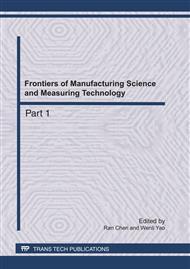p.698
p.704
p.708
p.713
p.718
p.723
p.728
p.733
p.738
Research on Effect of High Energy Implant to Resist Thickness
Abstract:
The experiment discusses the issue of high-energy implant to the resist thickness and how the resist etched away during implantation process. The resist that is use as a mask or material to block the dopant ion such as Phosphorous, Boron or Arsenic introduces into silicon substrate. It is a common practice by all semiconductor industrial players to use photoresist as their protection on desired area in which purposely set as non-implanted area. The research benefits the engineer on determine the sufficient photoresist thickness for specific implant energy.
Info:
Periodical:
Pages:
718-722
Citation:
Online since:
May 2011
Price:
Сopyright:
© 2011 Trans Tech Publications Ltd. All Rights Reserved
Share:
Citation:


